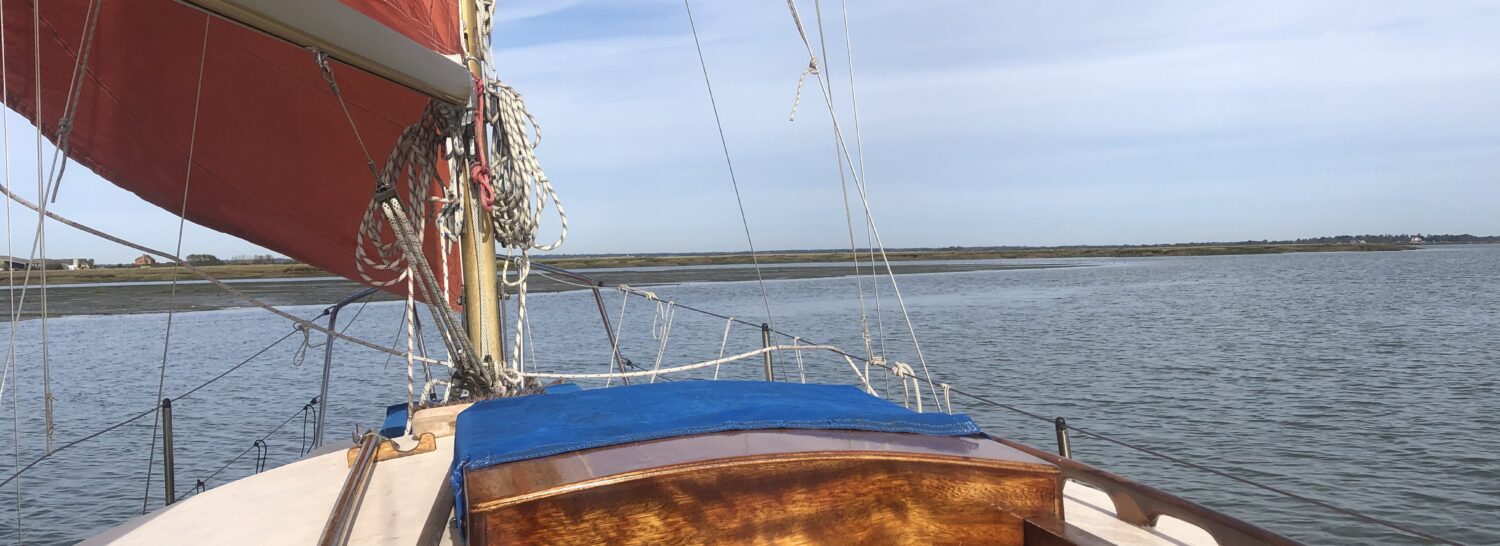Whilst away down in West Sussex a little while back during the early autumn, I alighted on a book that looked interesting in a historical way. Great Years in Yachting by John Nicholson. It was published by Nautical Publishing Ltd, of Lymington in 1970. It is therefore still under copyright and I acknowledge with thanks all photographs of book pages.

This, of course, is the Nicholson of that famous Gosport (and Southampton) yacht designing and building fame. John is the son of Charles E. Nicholson, the doyen of yachting – designing, building and racing, as well as family cruising. The Nicholson’s owned and ran the firm of Camper and Nicholsons based adjacent to the Gosport/Portsmouth ferry.

The book is ostensibly about Charles Nicholson and the life of the firm during his period of chairmanship (There were three brothers) – John assumed control in the fulness of time, retiring c 1970, but covers a little of the companies pre-history too.

The family yachts get a reasonable and interesting coverage. John and his sister Mary were clearly the sailors amongst the Nicholson siblings: they were regularly crewing…
Charles made the mistake of many a (gung-ho) sailor and frightened the wits out of his young wife and she rarely stepped foot aboard a yacht following a very bad passage…
How many people have done this, I wonder!

The shear size and volume of the Nicholson production at Gosport and Southampton was phenomenal. The Southampton yard was opened as yachts grew in size and, more importantly, draft. Gosport’s slip could manage up to 15′, just.

There is a chapter on ‘Captains and Skippers’… Up until after the cessation of hostilities of the second world war, crews were professional, although amateurs were creeping in. The early interlopers were generally termed ‘Hired Assassins’ or later, ‘pier-head jumpers’ to be kinder and less derogatory. The day of the professional was certainly cropped after a strike of the crew of a mid 1930s Americas Cup Challenger. She was essentially the better yacht, but still lost!

I was amazed at the attitude of ‘build at no expense’ and the huge alterations carried out after a year on the racing circuit, but, it must be remembered that the worth of such men as Tommy Sopwith and his industrial contemporaries was immense. Akin to the Oligarchs washing around today.

The deck edge is awash. The attire worn seems absolutely ridiculous today!
Charles Nicholson was involved with all of the Endeavour Americas Cup projects and the last, Endeavour II, was faster and technically better than the American vessel, however, the aluminium mast of Ranger gave her an advantage in less heel in the generally light wind sailing in which the cup was sailed…


Camper & Nicholsons not only built the big classes and steam/motor yachts, but 12, 8 and 6 metre vessels, as well as cruising vessels for the less wealthy, however, these were still on the large size if you compare to say a yacht from an east coast yard.

The book ends with a short chapter on the ;Sound in the shipyard’ where John reminiscences on the lost cacophony produced by riveting, plate bending, hammering of the caulkers and the huge circular saws…
The firm moved with the times and a marina had filled the water off their Gosport Yard and they had slipped smoothly into the use of GRP.
The latter is not surprising for the firm had always been innovative using laminated timbers and diagonal planking etc throughout the early 1900s.
I was left with one huge overriding feeling of this lost world. The definite demarcation of the haves and have-nots – the ‘stench’ – not in a nasty way – of privilege…
Is it worth reading if you can find a copy, well, yes!
